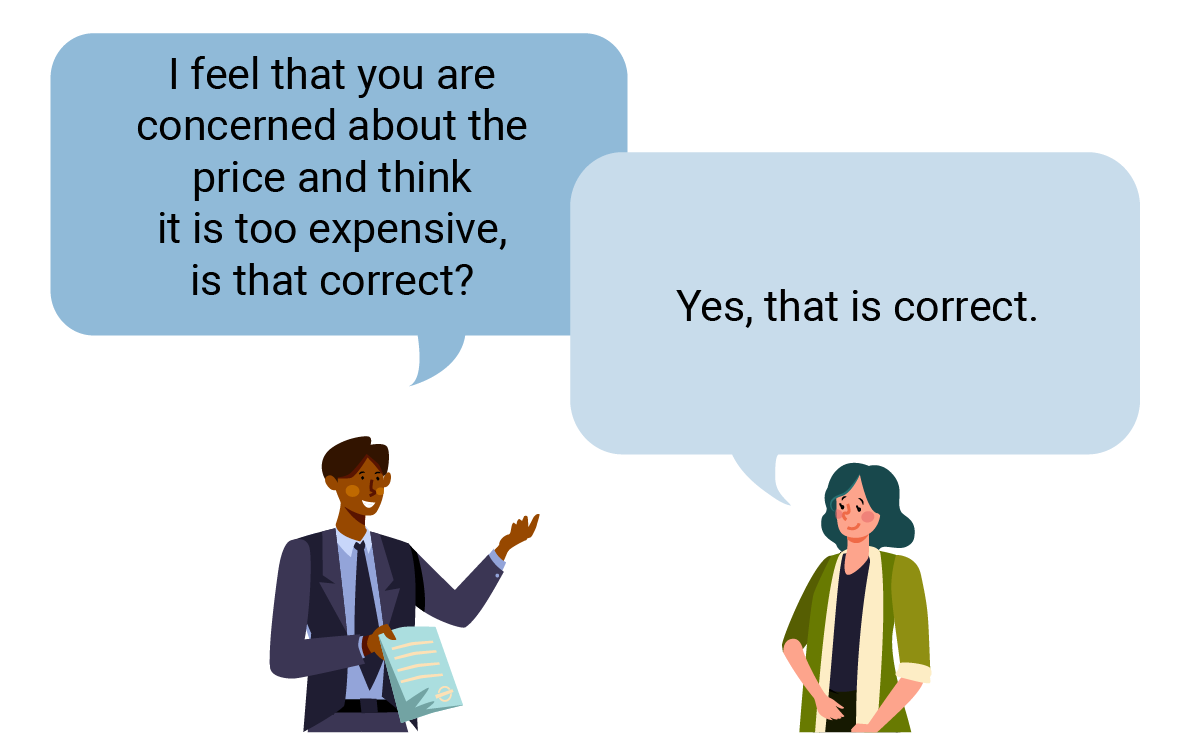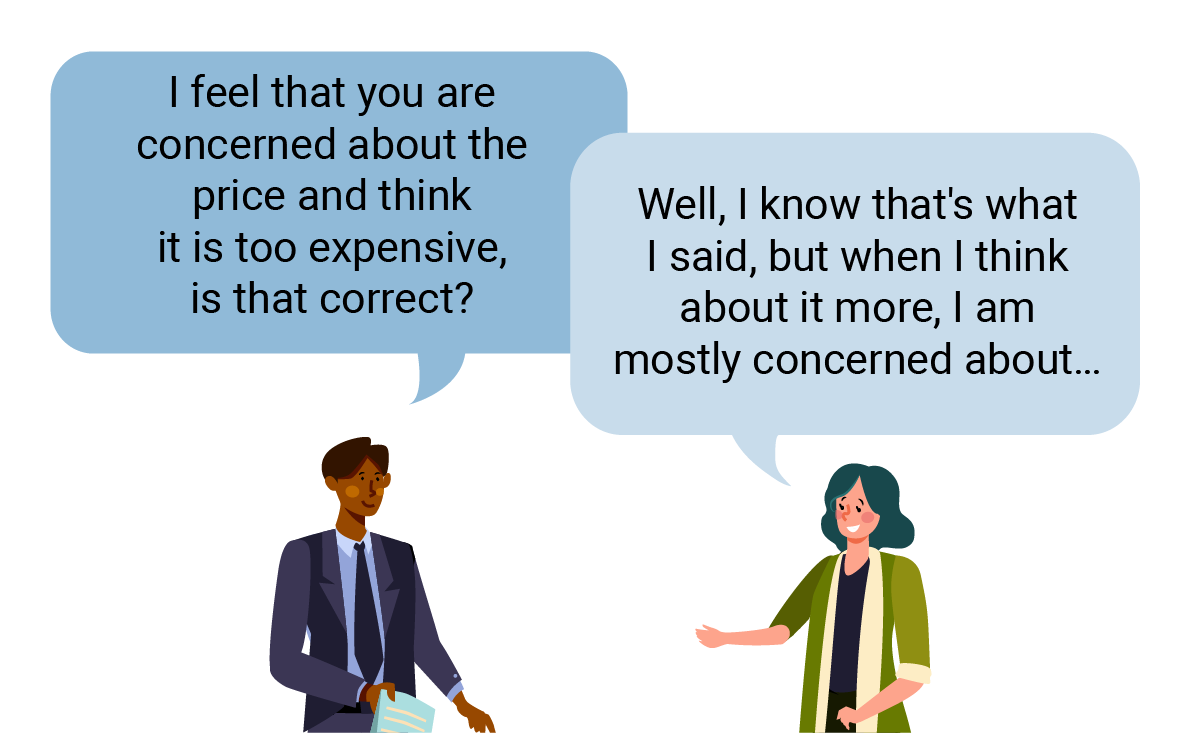Selling and Sales management - Chapter 11: Closing the deal
1/20
There's no tags or description
Looks like no tags are added yet.
Name | Mastery | Learn | Test | Matching | Spaced |
|---|
No study sessions yet.
21 Terms
The steps to handling objections
Use the Socratic method to uncover concern
Restate
Thank the customer
Resolve the objection
Using the socratic method
Finding the root of the customer’s concern by asking questions that provoke critical thinking
Restating
Explaining the problem as you understand it and repeating it back to the customer to see if you were correct

Restating (con’t)
Ensures the customer knows what the problem truly is as people sometimes have trouble fully conveying their feelings

Thanking the customer
Shows empathy and creates a safe environment where the customer will feel comfortable
i.e. Say: “Thank you for expressing your concern. I can understand your point of view
Handling price-related objections
Offer:
Case studies/social proofs
Discuss beneficial outcomes
Compromise on cost
Find out the true reason for the objection
Handling offering-related objections (category 1)
Focuses on social proof to show value
Know how you’re different from the competition
Handling offering-related objections (category 2)
Use ponder questions to show the importance of fixing the problem
Handling offering-related objections (category 3)
Offer case studies as proof
Offer a reference from one of your best customers
Noncommittal customers
Be upfront and ask the customer if they think the product is right for them
Give them as much time as they need to make an informed decision
Use the socratic method to get to the bottom of underlying issues
Handling general concerns (Strategy 1)
Respond with a question to get more time to think of an answer, and better respond with the info gained from the customer
e.g. If a customer asks “What makes you better than our current vendor?” answer with “They’re a great company, why did you choose them?”
Handling general concerns (Strategy 2)
Use if/then statements
e.g. If I could demonstrate the superiority of our product in our next meeting, would you be willing to buy?
The benefits of using stories
Retention goes up by 65%-70%, and increases emotional connection; make the customer the hero of the story
Best negotiation practices
Listen more than you talk
Know what’s most important to you
Use customer-oriented framing
Consider the stage being set
Be confident in the value being offered
Be willing to walk away
Play for the long-term relationship
Buyer anticipated regret
When a buyer anticipates the regret they’ll feel for buying a product
What can be done to lower the emotional barriers prior to buying
Offer a free trial
Offer a free money-back guarantee
What can be done to handle the fear of missing out
Instill a sense of urgency
e.g. A customer who has been dragging his feet wants to meet tomorrow, say something like "I actually have meetings most of the day tomorrow with potential customers. People are really excited about our product, and we are really busy right now. But I can open up some time the following day. Would that work for you?"
What can be done to handle scarcity
Convey ideas that customers will miss out great deals if they don’t
Micro-commitments
Smaller commitments or agreements the prospect makes leading up to the final decisions
e.g. Prospecting, demos, proposal reviews
The sales process
Prospecting
Deep discussions
Demo
Proposal review
Closing
Uncomfortable questions to ask to ensure you have the full picture
We understand that the decision to invest in a solution like this requires the involvement of a committee. Besides yourself, who else would you like to be a part of the demonstration next week?
What is your internal process when it comes to selecting a vendor?
Is this a budgeted project? If so, what is your budgetary range?
After we offer a demonstration, what will be the next step?
What may be some of the issues that could potentially hinder you from partnering with